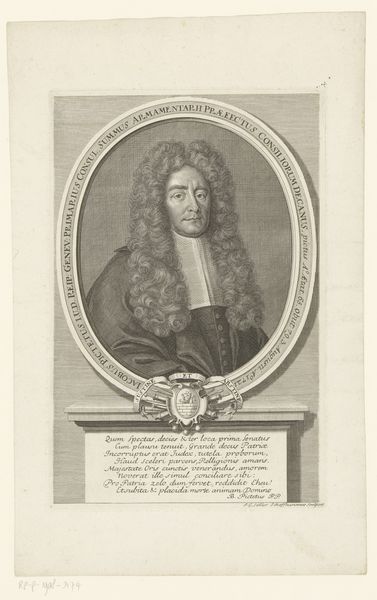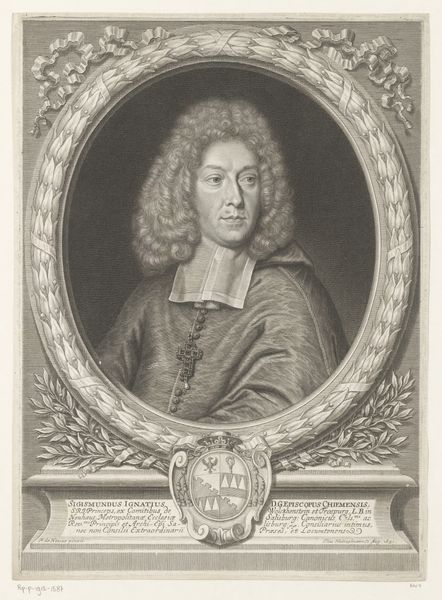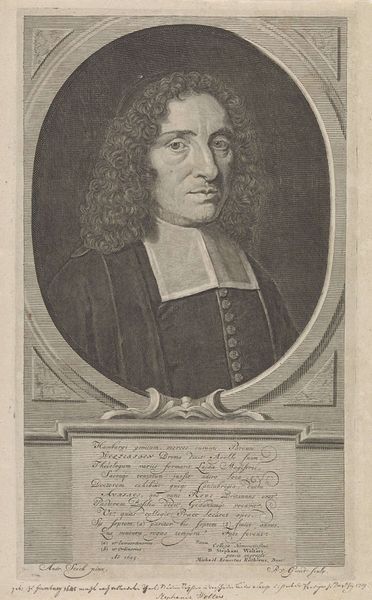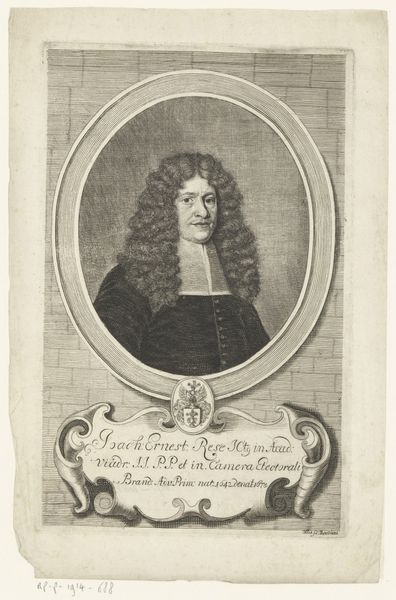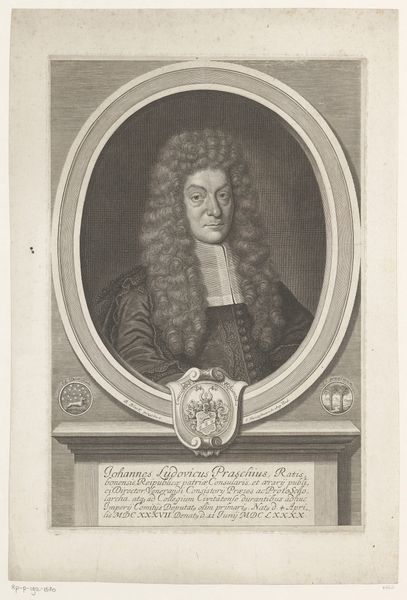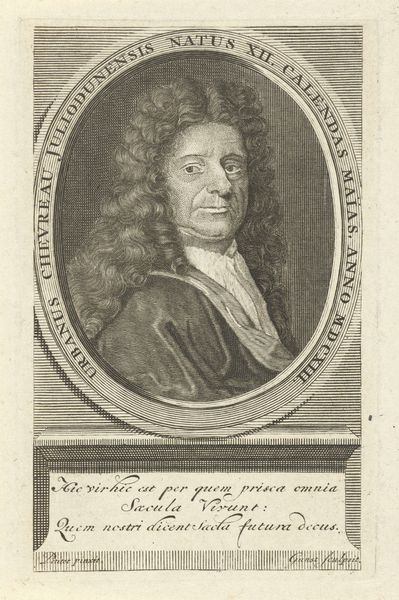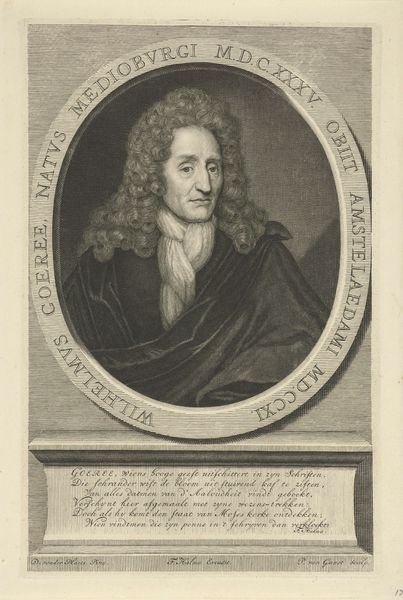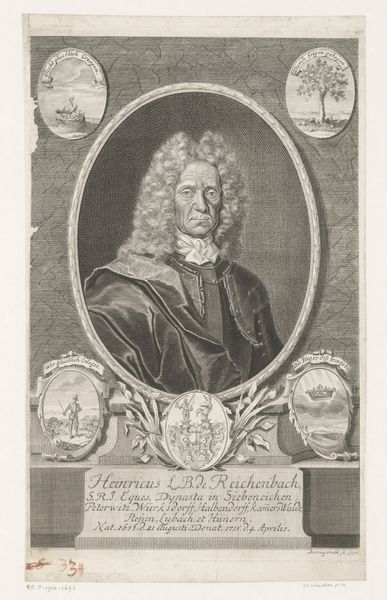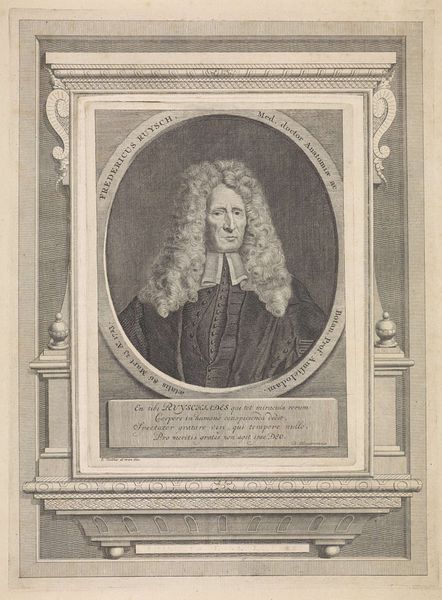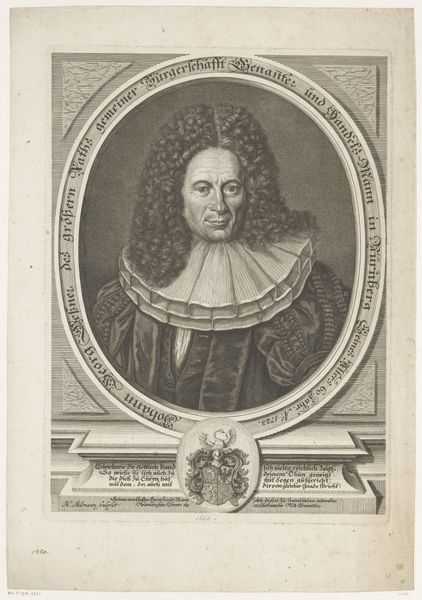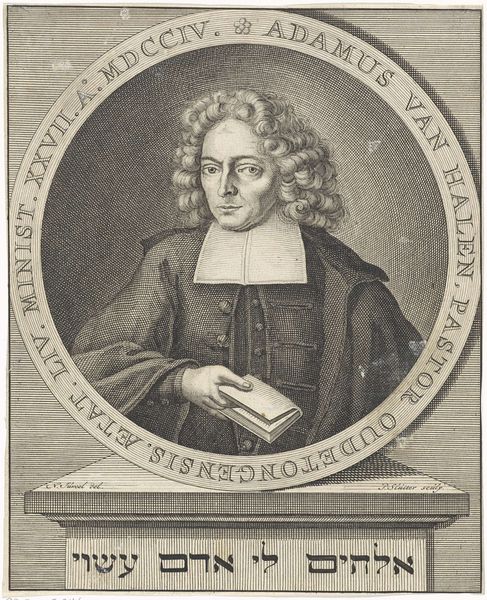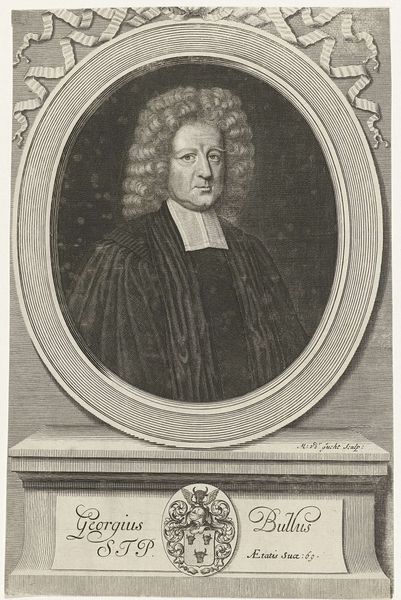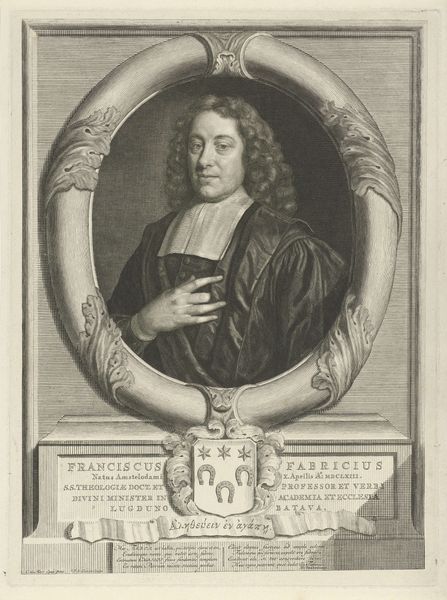
Portret van Frederick Spanheim de jongere op 68-jarige leeftijd 1700 - 1731
0:00
0:00
engraving
#
portrait
#
baroque
#
history-painting
#
engraving
Dimensions: height 336 mm, width 229 mm
Copyright: Rijks Museum: Open Domain
Editor: So, here we have an engraving titled "Portret van Frederick Spanheim de jongere op 68-jarige leeftijd," dating roughly from 1700 to 1731, and the engraver was Pieter van Gunst. There’s a formality and slight sternness to the portrait that I find interesting. How do you interpret this work? Curator: Indeed. Immediately, the elaborate frame around Spanheim pulls us in. Think of the frame itself as a kind of language. The leaves and scrolls, for instance – where do we see similar decorative motifs from this period and what values do they represent? These frames communicate power, intellect, permanence. Editor: I hadn't really thought of the frame as adding to the message. It's like a visual echo of his status, you mean? Curator: Precisely. Also, consider Spanheim’s attire: the plain, dark clothing contrasted against the pristine white collar. How does this contrast work with the image of religious authority projected by the inscription and Baroque frame? Editor: I see what you mean. It's almost like a separation of earthly and scholarly significance. Is that kind of contrast common in Baroque portraiture? Curator: Quite often. And how might the inscription itself – detailing Spanheim’s titles and age – reinforce that intended image? Editor: By making him feel grounded in his achievements and time. Thanks, seeing these details as symbols and connecting it with what's inside and outside the image is eye-opening! Curator: And, ultimately, all of this builds into the story of a man and his time, offering a unique lens through which to view cultural memory.
Comments
No comments
Be the first to comment and join the conversation on the ultimate creative platform.
